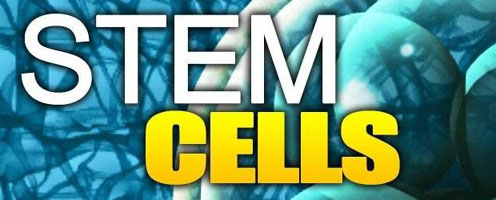A study published in the journal Stroke “is creating significant buzz in the neuroscience community because the results appear to contradict a core belief about brain damage — that it is permanent and irreversible,” according to Ariana Eunjung Cha of the Washington Post.
The preliminary research, which admittedly is tentative and involved only 18 patients, showed “meaningful” recovery.
“These were patients who had significant motor deficits for six months or more,” lead author Gary Steinberg told UPI. “People who had a hard time moving their arm or leg, or walking. People for whom we have no real treatment. But after the injections we saw improvement in all 18 patients, as a group, within a month. Within days some were lifting their arms over their head. Lifting their legs off their bed. Walking, when they hadn’t in months or years. The results were very exciting.”
The findings are of direct interest to pro-lifers on several grounds.
For instance, contrary to the endless stream of hype about stem cells from human embryos, the cells for the patients were harvested from the bone marrow of adult donors. Medically a very simple procedure with no ethical problems.
Also, who are in the cross-hairs of the assisted suicide crowd? Anyone who is cognitively disabled and/or seriously physically disabled. Cha notes that the results “could have implications for our understanding of an array of disorders including traumatic brain injury, spinal cord injury and Alzheimer’s if confirmed in larger-scale testing.”
Follow LifeNews.com on Instagram for pro-life pictures and the latest pro-life news.
According to the article in Stroke, having drilled a hole into the skulls of the study’s participants, surgeons injected the stem cells in several locations around the area of the brain damaged by the stroke. “The patients were conscious the whole time and went home the same day,” Cha wrote. There were “minimal adverse effects.”
The team used “brain imaging and several standard scales that look at speech, vision, motor ability and other aspects of daily functioning” to study the 18 patients one month, six months, and twelve months after surgery, Cha explained.
Steinberg, chair of neurosurgery at Stanford, told the Washington Post
that while he is cautious about “overselling” the results of such a small study, his team has been “stunned” that seven of the 18 patients experienced significant improvement in their abilities following treatment.
“Their recovery was not just a minimal recovery like someone who couldn’t move a thumb now being able to wiggle it. It was much more meaningful. One 71-year-old wheelchair-bound patient was walking again,” said Steinberg, who personally performed most of the surgeries.
Interestingly
Steinberg said that the study does not support the idea that the injected stem cells become neurons, as has been previously thought. Instead, it suggests that they seem to trigger some kind of biochemical process that enhances the brain’s ability to repair itself.
“A theory is that they turn the adult brain into the neonatal brain that recovers well,” he explained.
According to Cha, the Stanford researchers are aiming for a total of 156 patients “and say they hope to have results in as soon as two years.”
LifeNews.com Note: Dave Andrusko is the editor of National Right to Life News and an author and editor of several books on abortion topics. This post originally appeared in at National Right to Life News Today —- an online column on pro-life issues.








